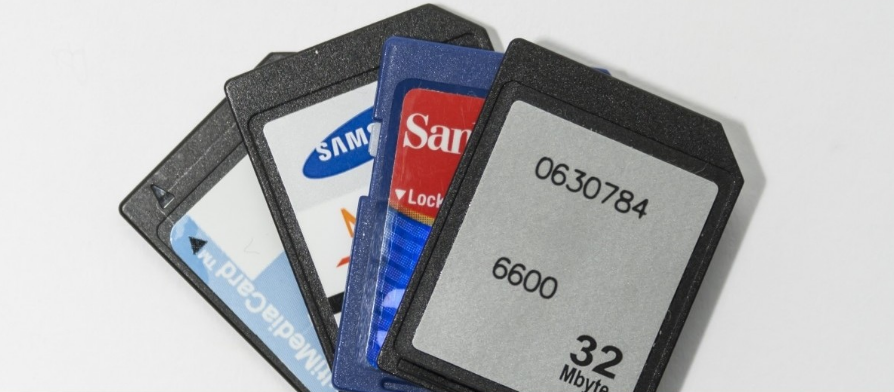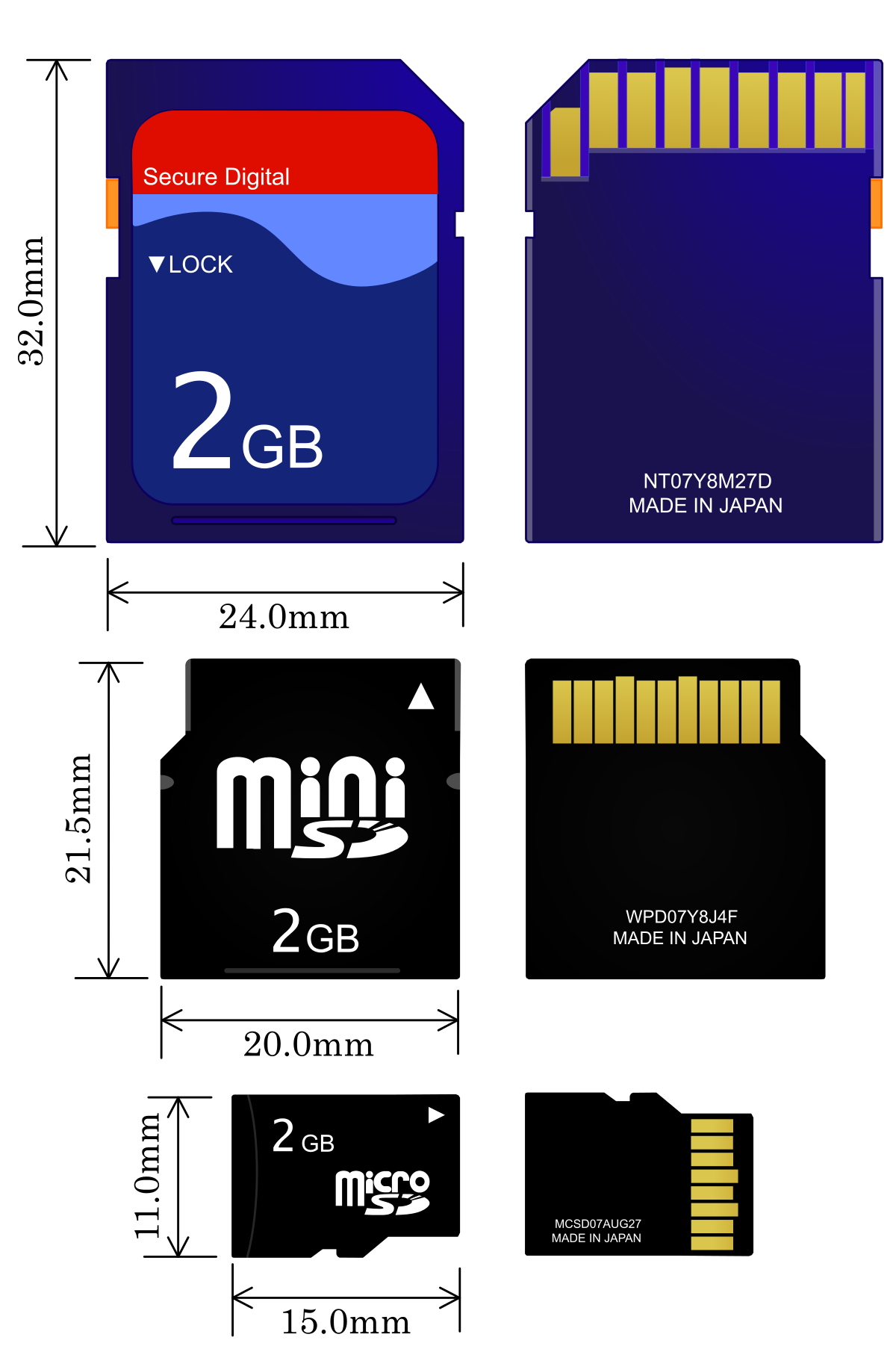
We are going to explain to you what are the types of SD cards, the S secure D digital memory cards that are used to be inserted into different types of portable devices to expand their internal storage. The idea is that when you go to buy an SD card, you can know what the acronyms that you can find on them mean.
To do this, we will begin by explaining what their most common types are about their size. We will also tell you what the differences are between SDSC, SDHC, and SDXC cards, and we will finish by talking about the classes with which you can differentiate the different writing speeds they have.
SD card types

We are going to start by explaining to you what are the three main types of SD cards that you can find on the market. They differ in size and thickness, and while there are devices that support large standard SD cards, there will be others who prefer to use the smaller miniSD and microSD sizes.
- SD card: Standard SD cards are the first to hit the market, and their measurements are 32 x 24 millimeters, with a thickness of 2.1 millimeters. They are used in cameras, audio recorders, and many laptops that are compatible with them.
- miniSD card: They are not as widely used as the other two formats, and have a size of 21.5×20 millimeters, with a thickness of 1.4 millimeters.
- microSD card: The smallest of all, with a size of 15×11 millimeters, and a thickness of only 1 millimeter. It is the one used by small devices such as mobile phones and tablets.
You have to keep in mind that some types of adapters help to solve possible problems between the different formats, at least when you want to use smaller type cards in devices that have slots for the larger ones. For example, there are adapters prepared to put a microSD inside an SD and be able to use it in laptops and devices prepared for these seconds.
SC, HC, XC, and their storage capacities

Sometimes you will see that the cards also have a two-letter code, which can be SC, HC, or XC. These codes represent the storage capacity of the cards in question.
- SDSC: The initials SC stand for S standard Capacity, and are cards with the capacity to store up to 2 GB of data.
- SDHC: The initials XC stand for High Capacity, and are cards with the capacity to store up to 32 GB of data.
- SDXC: The acronym XC stands for Extended Capacity, and they are cards with the capacity to store up to 2 TB GB of data, which is about 2,000 GB .
Each device is compatible with one of these types of cards, but since they are backward compatible you will not have any problem. This means that devices that support SD XC will also be compatible with HC and SC and that devices that support HC will also be compatible with SC.
But you have to be clear that it is backward compatibility and not absolute compatibility, which means that devices that support a type with less capacity are not going to be compatible with types with greater capacity. So, before buying a card it is recommended that you make sure which ones your device is compatible with.
SD card classes

SD cards are also differentiated from each other by their class, which indicates their writing speed. Classes can be Class 2 (C2), Class 4 (C4), Class 6 (C6), Class 10 (C10), UHS Speed Class 1 (U1), or UHS Speed Class 3 (U3). The names of the first four classes already indicate the writing speed in MB/s they have.
The difference in the names has to do with its Bus, the data transfer system. Cards up to Class 6 have a Standard Bus, although going up to Class 10 changes to a High-Speed Bus. The point is that the other two classes already use Ultra High-Speed Buses, and that’s why it was decided to call them differently. Here you have the complete list.
- Class 2: They have a minimum writing speed of 2 MB/s, and can be used to take photos and record videos in low resolution.
- Class 4: They have a minimum write speed of 4 MB/s, and can be used to record 720p HD videos.
- Class 6: They have a minimum writing speed of 6 MB/s, and can be used to record 720p HD videos.
- Class 10: They have a minimum writing speed of 10 MB/s, and can be used to take consecutive high-definition photos and record videos in FullHD of 1080p or lower resolutions.
- UHS Speed Class 1 (U1): They have a minimum writing speed of 10 MB/s, but since it has a better bus than Class 10 it is better for recording FullHD videos at 1080p that are longer.
- UHS Speed Class 3 (U3): They have a minimum writing speed of 30 MB/s, and it is the most suitable for recording videos in 4K resolutions.
The cards can also be differentiated by their video speed class, which is a separate class that is also very important to take into account when buying cards to make videos since they influence the maximum number of frames per second at which they can be recorded.
- Class V6: It is on Class 6 cards, for recording HD video at 72p.
- Class V10: It is in Class 10 and UHS1 cards, to take consecutive high-definition photos and record videos in FullHD of 1080p or lower resolutions
- Class V30 : On Class U3 cards, for 4K videos at 24/30 fps
- Class V60: On Class U3 cards, for 4K videos at 60/120 fps
- V90 Class: On U3 Class cards, for 4K 60/120 fps or 8K video
Write protection and WiFi connection
If you’re going to buy a standard-size SD card, there are two other things to keep in mind. The first is the write protection, a tab that is usually on one side of the card, and that allows you to block it so that no data can be saved on it. This helps prevent accidents that cause you to lose your photos, videos, or files.
And the other feature is the WiFi connection. There are standard-size SD cards that allow you to establish a WiFi connection to communicate with another device. In this way, if you take a photo with a digital camera, you can connect to your mobile or laptop and pass the data by establishing a WiFi connection between the two instead of having to take the card out of the slot.

Sharlene Meriel is an avid gamer with a knack for technology. He has been writing about the latest technologies for the past 5 years. His contribution in technology journalism has been noteworthy. He is also a day trader with interest in the Forex market.










